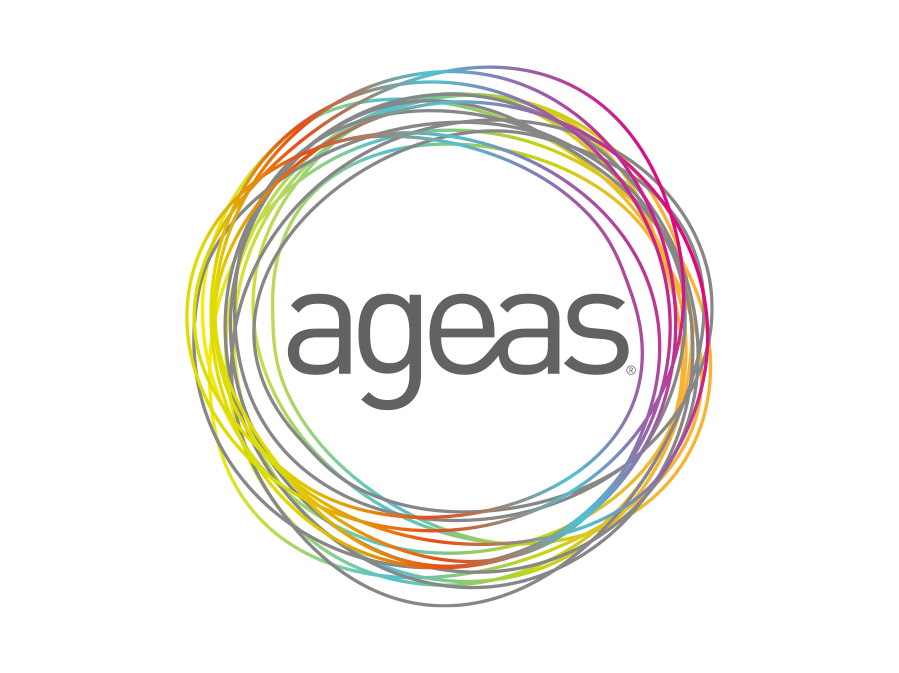Average Life Insurance Cost UK 2025

Life insurance. It’s a topic many of us prefer to put off, filed under "I'll sort that out later." Yet, deep down, we all understand its fundamental importance. It’s the ultimate financial safety net, a promise to your loved ones that they will be cared for, no matter what the future holds. But what does that peace of mind actually cost?
For many, the perceived expense is the biggest barrier to taking that first step. The good news is that for most people, life insurance is far more affordable than they imagine. The key is understanding what you’re buying and the factors that shape the price.
This is your definitive 2025 guide to the average cost of life insurance in the UK. As expert insurance researchers and writers, we at WeCovr will break down the typical monthly premiums you can expect to pay, demystify the different types of cover available, and share insider tips on how to secure the best possible price for the protection your family deserves.
WeCovr’s breakdown of typical monthly life insurance premiums by age, health and cover type
One of the first questions we’re always asked is, "How much will it cost me?" The answer is always, "It depends." Your personal circumstances are what shape your premium.
To give you a clear and realistic starting point, we’ve compiled a series of tables showing illustrative monthly premiums for 2025. These figures are based on non-smokers in good health unless stated otherwise. Please remember, these are examples—your final quote will be based on a full application and underwriting process.
A quick note on cover types:
- Level Term Insurance: The payout amount remains the same throughout the policy term. Ideal for covering an interest-only mortgage or providing a lump sum for your family.
- Decreasing Term Insurance: The payout amount reduces over time, usually in line with a repayment mortgage. It's often the most affordable option.
- Critical Illness Cover: Can be added to life insurance. It pays out a lump sum if you are diagnosed with a specified serious illness.
- Whole of Life Insurance: Guarantees a payout whenever you die, making it suitable for covering funeral costs or Inheritance Tax.
Table 1: Average Monthly Cost of Level Term Life Insurance (Non-Smoker, Good Health)
Based on a 25-year term. These are illustrative quotes.
| Age | £100,000 Cover | £250,000 Cover | £500,000 Cover |
|---|---|---|---|
| 25 | £4.80 | £8.50 | £14.90 |
| 35 | £7.50 | £14.95 | £27.50 |
| 45 | £17.20 | £38.10 | £73.80 |
| 55 | £45.50 | £108.00 | £212.00 |
Table 2: Average Monthly Cost of Decreasing Term Life Insurance (Non-Smoker, Good Health)
Often called Mortgage Life Insurance. Based on a 25-year term.
| Age | £150,000 Cover | £300,000 Cover | £450,000 Cover |
|---|---|---|---|
| 25 | £4.20 | £6.10 | £8.80 |
| 35 | £6.30 | £9.90 | £15.20 |
| 45 | £13.50 | £24.90 | £40.10 |
| 55 | £38.10 | £75.00 | £115.00 |
The Impact of Smoking
Smoking is the single largest lifestyle factor affecting life insurance premiums. Insurers view smokers as significantly higher risk, and this is reflected in the price. The tables below show the stark difference in cost.
Table 3: Average Monthly Cost of Level Term Life Insurance (Smoker, Good Health)
Based on a 25-year term, illustrating the increased cost for smokers.
| Age | £100,000 Cover | £250,000 Cover | £500,000 Cover |
|---|---|---|---|
| 25 | £7.90 | £15.80 | £29.50 |
| 35 | £13.20 | £28.50 | £54.00 |
| 45 | £32.00 | £75.00 | £145.00 |
| 55 | £89.00 | £215.00 | £420.00 |
Table 4: Average Monthly Cost of Combined Life & Critical Illness Cover (Non-Smoker, Good Health)
Provides a lump sum on either diagnosis of a critical illness or death. Based on a 25-year term.
| Age | £100,000 Cover | £250,000 Cover |
|---|---|---|
| 30 | £18.50 | £41.00 |
| 40 | £39.00 | £89.00 |
| 50 | £85.00 | £205.00 |
The Key Factors That Determine Your Life Insurance Premium
As the tables show, your premium is not a one-size-fits-all figure. It’s a carefully calculated reflection of the risk an insurer takes on. Let’s break down the main components that underwriters scrutinise.
1. Your Age
This is the most straightforward factor. The younger you are when you take out a policy, the lower your risk of passing away during the term. This translates directly into cheaper premiums. As you can see from our tables, a 35-year-old might pay around £15 a month for £250,000 of cover, while a 55-year-old could be looking at over £100 for the same policy. The lesson is simple: the best time to buy life insurance was yesterday. The next best time is today.
2. Your Health and Medical History
Insurers will ask detailed questions about your health. This includes:
- Current Health: Your height, weight (BMI), blood pressure, and cholesterol levels.
- Pre-existing Conditions: Conditions like diabetes, heart disease, cancer, or multiple sclerosis will impact your premium. However, having a medical condition does not mean you can't get cover. It just means it’s even more important to use a specialist broker who knows which insurers offer the most favourable terms for your specific situation.
- Family Medical History: A history of hereditary conditions (like heart disease or certain cancers) in close relatives (usually parents or siblings) before a certain age (e.g., 60 or 65) can also affect your premium.
3. Your Lifestyle Choices
How you live your life has a direct bearing on your health and, therefore, your insurance cost.
- Smoking and Vaping: As our tables demonstrate, this is the big one. Insurers classify users of any nicotine products—cigarettes, cigars, vapes, or nicotine patches/gum—as 'smokers'. Premiums for smokers can be double, or even triple, those for non-smokers. To be classified as a non-smoker, you typically need to have been nicotine-free for at least 12 months.
- Alcohol Consumption: You will be asked about your weekly alcohol intake in units. Consistently high consumption can lead to higher premiums or, in extreme cases, a declined application.
- Recreational Drug Use: Any past or present use must be declared and will be assessed by the insurer.
4. Your Occupation and Hobbies
Does your job involve working at heights, with hazardous materials, or in a high-risk environment? Are you a firefighter, a deep-sea diver, or an offshore oil rig worker? If so, your premium may be higher. The same applies to risky hobbies like mountaineering, private piloting, or competitive motorsport.
5. The Policy Details
The specifics of the policy you choose are crucial.
- Type of Cover: As we've seen, a decreasing term policy is cheaper than a level term policy. Adding critical illness cover will increase the cost but provides a much wider layer of protection.
- Amount of Cover (Sum Assured): The larger the payout, the higher the premium. It's essential to calculate the right amount of cover for your needs—enough to clear debts and provide for your family without paying for unnecessary protection.
- Length of Policy (The Term): A 30-year policy will cost more per month than a 20-year policy for the same amount of cover, as there's a longer period during which a claim could be made.
- Joint vs. Single Policies: A joint policy covers two people but only pays out once, on the first death. It's usually slightly cheaper than two single policies but offers less comprehensive cover. If the surviving partner needed cover after the first death, they would have to reapply at an older age and with any new health conditions, making it more expensive.
A Closer Look at Different Types of Protection
While life insurance is the cornerstone of financial protection, it's part of a wider family of products designed to protect you and your loved ones from life's "what ifs."
Critical Illness Cover (CIC)
Imagine being diagnosed with cancer, having a heart attack, or suffering a stroke. Your priority should be recovery, not worrying about bills. This is where Critical Illness Cover comes in.
- What it is: A policy that pays a tax-free lump sum if you are diagnosed with one of the serious conditions specified in the policy.
- What it covers: Most policies cover cancer, heart attack, and stroke as standard, along with a list of other conditions which can number from 40 to over 100 depending on the insurer. This can include conditions like multiple sclerosis, kidney failure, and major organ transplant.
- Why it's important: According to Cancer Research UK, there are around 393,000 new cancer cases in the UK every year—that's over 1,000 a day. A CIC payout can give you the freedom to pay off your mortgage, cover lost income, pay for private treatment or home modifications, or simply give you breathing space to focus on getting better.
Real-Life Example: Sarah, a 42-year-old marketing manager and mother of two, is diagnosed with breast cancer. Her combined Life and Critical Illness policy pays out £150,000. This allows her to take a year off work, clear her credit card debt, and pay for specialist care without draining her family's savings. Her life cover remains in place to protect her family in the future.
Income Protection (IP)
Your ability to earn an income is your most valuable asset. What would happen if you couldn't work for months, or even years, due to an illness or injury? Statutory Sick Pay (SSP) provides a minimal safety net (£116.75 per week in 2024/25), but for most people, this is nowhere near enough to cover their outgoings.
- What it is: A policy that pays you a regular, tax-free monthly income if you're unable to work due to sickness or an accident. It's designed to replace a significant portion of your lost earnings.
- Key Features:
- Deferred Period: This is the waiting period before the payments start, typically ranging from 4 weeks to 12 months. The longer the deferred period, the cheaper the premium. You can align this with any sick pay you receive from your employer.
- Payment Period: Can be short-term (e.g., 1, 2, or 5 years per claim) or long-term (paying out until you return to work, or until the policy ends, often at retirement age). Long-term cover offers the most comprehensive protection.
- Why it's crucial: Especially for the self-employed and freelancers who have no access to employer sick pay, Income Protection is arguably the most important insurance they can own.
Real-Life Example: David, a 38-year-old self-employed electrician, falls from a ladder and suffers a serious back injury, leaving him unable to work for 18 months. After his 3-month deferred period, his Income Protection policy starts paying him £2,000 a month. This covers his mortgage, bills, and family expenses, preventing a financial crisis while he focuses on his rehabilitation.
Family Income Benefit
This is a clever variation of term life insurance. Instead of paying a single lump sum on death, it pays out a regular, tax-free monthly or annual income to your family for the remainder of the policy term.
- Who it's for: It's perfect for young families who want to ensure that day-to-day living costs and bills are covered, effectively replacing the deceased's monthly salary. It can feel more manageable for the surviving partner than dealing with a large, intimidating lump sum.
Specialist Cover for Business Owners and Directors
If you run your own business, your financial planning needs are more complex. Standard personal policies are vital, but you should also consider business-specific protection to safeguard the company you've worked so hard to build.
Key Person Insurance
Is there one person in your business whose death or serious illness would cause a significant financial fallout? This could be a top salesperson, a technical genius with specialist knowledge, or you, the founder.
- What it is: A life and/or critical illness policy taken out by the business on a key employee.
- How it works: The business pays the premiums and is the beneficiary of the policy. If a claim is made, the payout goes directly to the business. This cash injection can be used to recruit a replacement, cover lost profits, or reassure lenders and investors.
Relevant Life Insurance
This is one of the most tax-efficient ways for a limited company to provide death-in-service benefits for its directors and employees.
- What it is: A standalone, single-life policy that provides a lump sum payout to the employee's family or dependants if they die while employed.
- The Tax Benefits:
- The company pays the premiums, which are typically treated as an allowable business expense, making them tax-deductible.
- It is not usually considered a P11D benefit-in-kind, so there is no extra income tax for the employee.
- The payout is made into a discretionary trust, so it does not form part of the deceased's estate and is not subject to Inheritance Tax.
Executive Income Protection
This works like a personal income protection policy but is paid for by the business for a director or employee. It provides a regular income if they are unable to work due to illness or injury. Like Relevant Life Cover, the premiums are typically an allowable business expense and are not treated as a benefit-in-kind, making it a highly efficient way to protect key individuals' incomes.
Understanding Whole of Life Insurance: Modern Simplicity
When people think of life insurance that lasts forever, they often think of complex, old-fashioned plans. It's important to understand how these policies have evolved.
In the UK, some older or specialist whole of life policies — often called investment-linked or with-profits plans — were designed to build up a cash value over time. A portion of each premium covered the cost of life cover, while the rest was invested by the insurer. Over many years this investment could grow, creating a surrender value you could take if you cancelled the plan. These policies were complex, carried higher charges and premiums, and the value depended on investment performance. In the early years, surrender values were usually lower than the total premiums paid.
Today, the market is very different. The vast majority of whole of life insurance sold in the UK is pure protection, with no cash-in value. If you stop paying, the cover simply ends and nothing is returned.
While this may sound less flexible, these modern policies are clearer, more affordable, and better suited to straightforward protection needs such as covering an Inheritance Tax (IHT) liability or leaving a guaranteed legacy for your family. At WeCovr, we focus on these simple, transparent protection plans — comparing guaranteed cover across the market to find affordable and reliable solutions tailored to your goals.
How to Get Cheaper Life Insurance: WeCovr’s Top Tips
Securing a lower premium isn't about cutting corners on cover; it's about presenting yourself as the lowest possible risk to an insurer. Here’s how to do it.
- Buy Young: We can't stress this enough. The price difference between applying in your 20s versus your 40s is enormous. Lock in a low premium while you're young and healthy.
- Quit Smoking (and Vaping): If you smoke, quitting is the single biggest thing you can do to lower your premiums. After 12 months nicotine-free, you can be re-assessed as a non-smoker and could see your costs fall by 50% or more.
- Improve Your Health: Insurers love to see proactive health management. Lowering your BMI into a healthy range, reducing your alcohol intake, and getting your blood pressure or cholesterol under control can all lead to better rates.
- At WeCovr, we believe in proactive health, which is why our clients get complimentary access to our AI-powered calorie tracking app, CalorieHero, to support their wellness journey.
- Choose the Right Cover: Don't pay for what you don't need. If you have a repayment mortgage, a decreasing term policy is the most cost-effective way to protect it.
- Place Your Policy in Trust: While this doesn't reduce your monthly premium, it's a crucial financial planning step. Writing your life insurance policy in trust means the payout goes directly to your chosen beneficiaries, bypassing your estate. This avoids a lengthy probate process and, crucially, means the payout is not typically subject to Inheritance Tax. It's a simple process that we can help you with, and it's usually free to do.
- Use an Expert Broker: This is the most important tip. Trying to find the best policy yourself means going to each insurer individually or using a comparison site that only shows you the headline price, not the detail.
- A specialist broker like WeCovr understands the whole market. We know which insurers are most lenient for certain medical conditions, which have the best definitions for critical illness, and which offer the best value for your specific needs. We do the shopping around for you, handle the application, and fight your corner to get you the best possible terms, all at no extra cost to you.
Conclusion: Securing Your Peace of Mind is Within Reach
Understanding the cost of life insurance is the first step towards securing your family's future. As we've shown, for a healthy individual, meaningful cover can cost less than a weekly coffee budget or a monthly streaming subscription.
The price you pay will be a unique reflection of your age, health, lifestyle, and the protection you need. Whether it's simple term insurance to cover the mortgage, comprehensive income protection to safeguard your salary, or a specialist business policy to protect your company, there is a solution that fits your circumstances and budget.
Life insurance is one of the most selfless and important purchases you will ever make. It's a tangible expression of care for the people who matter most. Don't let uncertainty about the cost hold you back. Take the next step today and find out just how affordable your peace of mind can be.
Frequently Asked Questions (FAQs)
Can I get life insurance with a pre-existing medical condition?
How much life insurance cover do I actually need?
- Any outstanding debts (mortgage, car loans, credit cards)
- An estimate of future living costs for your family
- Costs for childcare or education
- An amount to cover funeral expenses
Is the life insurance payout tax-free?
What's the difference between a broker like WeCovr and going directly to an insurer?
Do I need a medical exam to get life insurance?
Why life insurance and how does it work?
What is Life Insurance?
Life insurance is an insurance policy that can provide financial support for your loved ones when you or your joint policy holder passes away. It can help clear any outstanding debts, such as a mortgage, and cover your family's living and other expenses such costs of education, so your family can continue to pay bills and living expenses. In addition to life insurance, insurance providers offer related products such as income protection and critical illness, which we will touch upon below.How does it work?
Life insurance pays out if you die. The payout can be in the form of a lump sum payment or can be paid as a replacement for a regular income. It's your decision how much cover you'd like to take based on your financial resources and how much you'd like to leave to your family to help them deal with any outstanding debts and living expenses. Your premium depends on a number of factors, including your occupation, health and other criteria.The payout amount can change over time or can be fixed. A level term or whole of life policy offers a fixed payout. A decreasing term policy offers a payout that decreases over the term of the cover.
With critical illness policies, a payout is made if you’re diagnosed with a terminal illness with a remaining life expectancy of less than 12 months. While income protection policies ensure you can continue to meet your financial commitments if you are forced to take an extended break from work. If you can’t work because you’ve had an accident, fallen sick, or lost your job through no fault of your own, income protection insurance pays you an agreed portion of your salary each month.
Income protection is particularly helpful for people in dangerous occupations who want to be sure their mortgage will always be covered. Income protection only covers events beyond your control: you’re much less likely to be covered if you’re fired from your job or if you injure yourself deliberately.
Questions to ask yourself regarding life insurance
Just ask yourself:👉 Who would pay your mortgage or rent if you were to pass away or fall seriously ill?
👉 Who would pay for your family’s food, clothing, study fees or lifestyle?
👉 Who would provide for the costs of your funeral or clear your debts?
👉 Who would pay for your costs if you're unable to work due to serious illness or disability?
Many families don’t realise that life, income protection and critical illness insurance is one of the most effective ways to protect their finances. A great insurance policy can cover costs, protect a family from inheriting debts and even pay off a mortgage.
Many would think that the costs for all the benefits provided by life insurance, income protection insurance or critical illness insurance are too high, but the great news is in the current market policies are actually very inexpensive.
Benefits offered by income protection, life and critical illness insurance
Life insurance, income protection and critical illness insurance are indispensable for every family because a child loses a parent every 22 minutes in the UK, while every single day tragically 60 people suffer major injuries on the UK roads. Some people become unable to work because of sickness or disability.Life insurance cover pays out a lump sum to your family, loved ones or whomever you choose to get the money. This can be used to secure the financial future of your loved ones meaning they would not have to struggle financially in the event of your death.
If it's a critical illness cover, the payout happens sooner - upon diagnosis of a serious illness, disability or medical condition, easing the financial hardship such an event inevitably brings.
Income protection insurance can be very important for anyone who relies on a pay check to cover their living costs, but it's especially important if you’re self-employed or own a small business, where your employment and income is a bit less stable. It pays a regular income if you can't work because of sickness or disability and continues until you return to paid work or you retire.
In a world where 1 in 4 of us would struggle financially after just four weeks without work, the stark reality hits hard – a mere 7% of UK adults possess the vital shield of income protection. The urgency of safeguarding our financial well-being has never been more palpable.
Let's face it – relying on savings isn't a solution for everyone. Almost 25% of people have no savings at all, and a whopping 50% have £1,000 or less tucked away. Even more concerning, 51% of Brits – that's a huge 27 million people – wouldn't last more than one month living off their savings. That's a 10% increase from 2022.
And don't even think about state benefits being a safety net. The maximum you can expect from statutory sick pay is a mere £109.40 per week for up to 28 weeks. Not exactly a financial lifeline, right?
Now, let's tackle a common objection: "But I have critical illness insurance. I don't need income protection too." Here's the deal – the two policies apply to very different situations. In a nutshell:
- Critical illness insurance pays a single lump sum if you're diagnosed with or undergo surgery for a specified potentially life-threatening illness. It's great for handling big one-off expenses or debts.
- Income protection, on the other hand, pays a percentage of your salary as a regular payment if you can't work due to illness or injury. It's the superhero that tackles those relentless monthly bills.
Types of life insurance policies
Common reasons for getting a life insurance policy are to:✅ Leave behind an amount of money to keep your family comfortable
✅ Protect the family home and pay off the mortgage in full or in part
✅ Pay for funeral costs
Starting from as little as a couple of pounds per week, you can do all that with a Life Policy.
Level Term Life Insurance
One of the simplest forms of life insurance, level term life insurance works by selecting a length of time for which you would want to be covered and then deciding how much you would like your loved ones to receive should the worst happen. Should your life insurance policy pay out to your family, it would be in a lump sum amount that can be used in whatever way the beneficiary may wish.
Decreasing Term Life Insurance
Decreasing term life insurance works in the same way as level term, except the lump sum payment amount upon death decreases with time. The common use for decreasing term life cover is to protect against mortgage repayment as the lump sum decreases along with the principal of the mortgage itself.
Increasing Term Life Insurance
Increasing term life insurance aims to pay out a cash sum growing each year if the worst happens while covered by the policy. With increasing term life cover amount insured increases annually by a fixed amount for the length of the policy. This can protect your policy's value against inflation, which could be advantageous if you’re looking to maintain your loved ones’ living standards, continue paying off your mortgage in line with its repayment schedule and cover your children’s education fees.
Whole of Life Insurance
Whereas term life insurance policies only pay out if you pass away during their term, whole of life insurance pays out to your beneficiaries whenever this should happen. The most common uses for whole life insurance are to cover the costs of a funeral or as a vehicle for your family's inheritance tax planning.
Family Income Benefit
Family income benefit is a somewhat lesser-known product in the family of life insurance products. Paying out a set amount every month of year to your beneficiaries, it is the most cost-effective way of maintaining your family's living standards to an age where you'd expect them to be able to support themselves financially. The most common use would be for a family with children who are not working yet so are unable to take care of themselves financially.
Relevant Life Insurance
Relevant Life Insurance is a tax-efficient policy for a director or single employee. A simple level term life insurance product, it is placed in a specific trust to ensure its tax efficiency. The premiums are tax deductible and any benefit payable should a claim arise is also paid out tax free, which makes it an attractive product for entrepreneurs and their businesses.
Important Fact!
We can look at a more suitable option mid-term!
Why is it important to get life insurance early?
👉 Many people are very thankful that they had their life, income protection, and critical illness insurance cover in place before running into some serious issues. Critical illness and income protection insurance is as important as life insurance for protecting your family's finances.👉 We insure our cars, houses, bicycles and even bags! Yet our life and health are the most precious things we have.
Easily one of the most important insurance purchases an individual or family can make in their lifetime, the decision to buy life, income protection, critical illness and private medical health insurance can be made much simpler with the help of FCA-authorised advisers. They are the specialists who do the searching and analysis helping people choose between various types of life insurance policies available in the market, including income protection, critical illness and other types of policies most suitable to the client's individual circumstances.
It certainly won't do any harm if you speak with one of our experienced FCA-authorised insurance partner experts who are passionate about advising people on financial matters related to life insurance and are keen to provide you with a free consultation.
You can discuss with them in detail what affordable life, income protection, critical illness or private medical health insurance plan for the necessary peace of mind they would recommend! WeCovr works with some of the best advisers in the market.
By tapping the button below, you can book a free call with them in less than 30 seconds right now:
Our Group Is Proud To Have Issued 800,000+ Policies!
We've established collaboration agreements with leading insurance groups to create tailored coverage
























How It Works
1. Complete a brief form

2. Our experts analyse your information and find you best quotes

3. Enjoy your protection!

Any questions?
Learn more

Who Are WeCovr?
WeCovr is an insurance specialist for people valuing their peace of mind and a great service.👍 WeCovr will help you get your private medical insurance, life insurance, critical illness insurance and others in no time thanks to our wonderful super-friendly experts ready to assist you every step of the way.
Just a quick and simple form and an easy conversation with one of our experts and your valuable insurance policy is in place for that needed peace of mind!